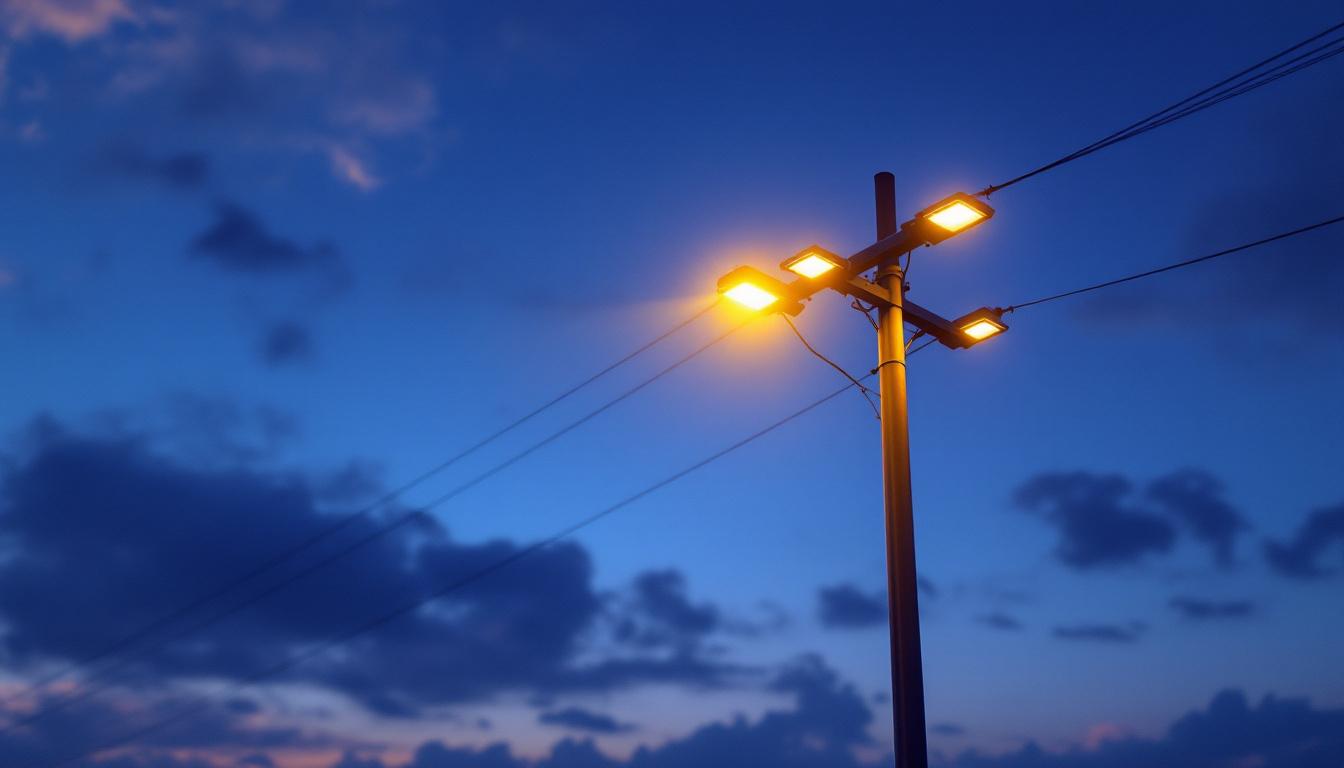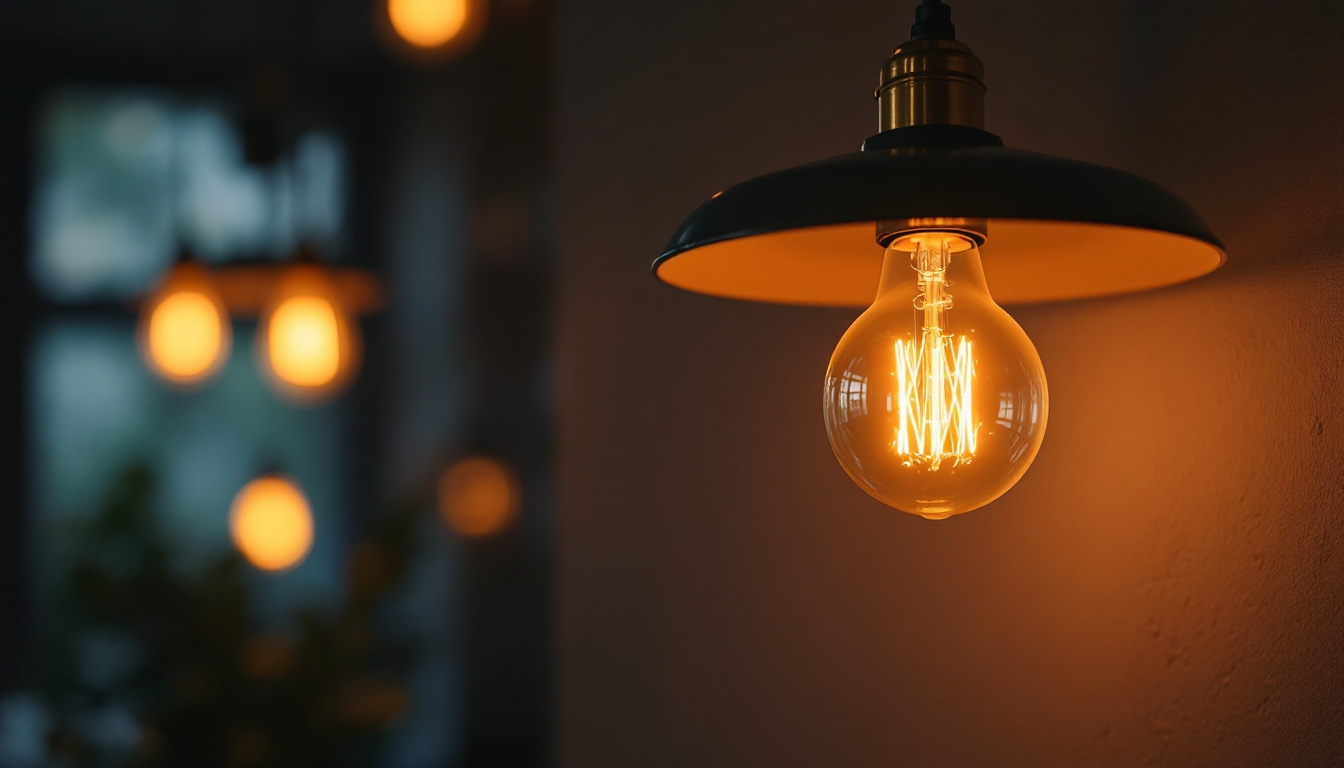
In the evolving landscape of energy-efficient solutions, lighting for power poles stands out as a critical component. As cities grow and the demand for efficient public infrastructure increases, the role of lighting in enhancing safety, visibility, and energy conservation becomes paramount. This article delves into the essentials of power pole lighting, exploring its benefits, technologies, and best practices for installation and maintenance.
Power pole lighting refers to the illumination systems installed on utility poles, typically used to enhance visibility in public areas such as streets, parking lots, and parks. These systems not only provide safety for pedestrians and drivers but also play a significant role in crime prevention and community well-being. The presence of adequate lighting can transform a neighborhood, making it more inviting and accessible, especially during nighttime hours when visibility is reduced.
Traditionally, power pole lighting utilized high-intensity discharge (HID) lamps, which, while effective, are often inefficient and costly in terms of energy consumption. The shift towards more energy-efficient lighting solutions has led to the adoption of LED technology, which offers numerous advantages over conventional lighting methods. This transition is not merely a trend; it reflects a growing awareness of sustainability and the need for smarter energy usage in urban planning.
LED lighting has revolutionized the way power poles are illuminated. One of the most significant benefits is energy efficiency. LEDs consume significantly less power than traditional lighting options, reducing overall energy costs. This efficiency translates into lower utility bills for municipalities and businesses alike. Additionally, the reduced energy demand contributes to a decrease in greenhouse gas emissions, aligning with global efforts to combat climate change and promote sustainable urban environments.
Additionally, LEDs have a longer lifespan, often lasting up to 25 times longer than traditional bulbs. This longevity reduces the frequency of replacements, leading to lower maintenance costs and less waste. Moreover, the durability of LEDs makes them less susceptible to damage from environmental factors, such as wind and rain. The technology behind LEDs also allows for greater flexibility in design, enabling cities to implement innovative lighting solutions that can adapt to various urban landscapes and needs.
Safety is a primary concern in public lighting. Well-lit areas deter criminal activity and enhance the overall sense of security for residents and visitors. LED lights provide bright, clear illumination that significantly improves visibility, especially in high-traffic areas. The ability to customize the color temperature of LEDs allows for tailored lighting solutions that can enhance visibility without causing glare. This adaptability is particularly beneficial in areas where different activities take place, such as sports fields or community centers, where lighting needs may vary throughout the day.
Furthermore, the directional nature of LED lighting minimizes light pollution, ensuring that light is focused where it is needed most. This targeted illumination not only benefits pedestrians and drivers but also contributes to the preservation of nocturnal wildlife, making it an environmentally friendly choice. Moreover, the integration of smart technology with LED systems allows for features such as motion sensors and dimming capabilities, which can further enhance safety while conserving energy. As cities continue to evolve, the implementation of smart lighting solutions on power poles is becoming an integral part of modern urban infrastructure, paving the way for safer and more sustainable communities.
When planning the installation of power pole lighting, several factors must be taken into account to ensure optimal performance and efficiency. From the selection of fixtures to the layout of the lighting system, careful consideration is essential.
Choosing the right lighting fixtures is crucial for achieving the desired outcomes. Factors such as lumens output, color temperature, and beam angle should be evaluated based on the specific application. For instance, a higher lumen output may be necessary for areas with heavy foot traffic, while a softer light may be more appropriate for residential neighborhoods.
Moreover, the fixture’s design should complement the aesthetic of the surrounding environment. Sleek, modern designs can enhance the visual appeal of urban areas, while more traditional styles may be better suited for historic districts. Additionally, energy efficiency is a key consideration; opting for LED fixtures not only reduces energy consumption but also extends the lifespan of the lighting system, resulting in lower maintenance costs over time. It’s also worth considering smart lighting options that can be programmed to adjust brightness based on real-time conditions, further enhancing energy savings.
The layout of the lighting system plays a vital role in its effectiveness. Proper spacing between fixtures ensures uniform illumination and minimizes dark spots. Conducting a lighting audit can help determine the optimal placement of lights based on the area’s specific needs. This audit may include analyzing the existing infrastructure, pedestrian patterns, and potential obstructions that could affect light distribution.
In addition to spacing, the height of the fixtures should be considered. Higher-mounted lights can cover larger areas but may require more powerful fixtures to achieve adequate brightness. Conversely, lower-mounted lights can provide more focused illumination but may necessitate more fixtures to cover the same area. Furthermore, the angle at which the lights are installed can significantly impact the quality of illumination. A well-planned angle can help reduce glare and enhance visibility for drivers and pedestrians alike, ensuring safety and comfort in the illuminated space. Regular maintenance and adjustments to the lighting layout may also be necessary to adapt to changes in the environment or usage patterns, ensuring that the lighting system remains effective over time.
Integrating energy management and control systems into power pole lighting can significantly enhance efficiency and functionality. These systems allow for remote monitoring and control of lighting levels, enabling adjustments based on real-time conditions. Furthermore, they can be programmed to respond to environmental factors such as weather changes, ensuring that lighting is optimized for safety and visibility without unnecessary energy expenditure. This adaptability not only contributes to sustainability efforts but also reduces operational costs for municipalities.
Smart lighting solutions utilize sensors and connectivity to optimize energy usage. For example, motion sensors can dim lights during periods of low activity and brighten them when movement is detected. This not only conserves energy but also extends the lifespan of the lighting fixtures. Additionally, these systems can be equipped with ambient light sensors that adjust the brightness of streetlights based on the surrounding light conditions, ensuring that streets remain adequately illuminated while minimizing energy consumption during brighter times of the day.
Moreover, smart lighting systems can be integrated with other municipal services, such as traffic management and public safety systems. This interconnectedness allows for a more cohesive approach to urban planning and resource management. For instance, in the event of an emergency, streetlights can be programmed to flash or change color to guide emergency vehicles, enhancing response times and public safety. Such integrations not only improve the functionality of urban infrastructure but also foster a sense of community by creating safer, more responsive environments for residents.
The implementation of data analytics in lighting management can lead to informed decision-making. By collecting data on usage patterns and maintenance needs, municipalities can better allocate resources and plan for future upgrades. This proactive approach ensures that lighting systems remain efficient and effective over time. Additionally, the data collected can provide insights into peak usage times and areas that may require additional lighting, allowing for targeted improvements that enhance public safety and accessibility.
Furthermore, the analysis of historical data can reveal trends that inform the design of future lighting projects. For example, if certain areas consistently show higher rates of accidents or crime, municipalities can prioritize those locations for enhanced lighting solutions. This strategic use of data not only improves safety but also builds public trust in local government initiatives, as residents see tangible improvements in their communities based on evidence-based decisions. By leveraging technology and data, municipalities can create smarter, safer, and more sustainable urban environments that meet the evolving needs of their citizens.
Regular maintenance is essential to ensure the longevity and performance of power pole lighting systems. Establishing a maintenance schedule can help identify potential issues before they escalate, saving time and resources in the long run.
Conducting routine inspections of lighting fixtures is crucial for identifying wear and tear. Inspecting for damaged lenses, loose connections, and signs of corrosion can prevent larger issues from arising. Additionally, cleaning fixtures regularly helps maintain optimal light output and prevents dirt buildup that can diminish performance.
It is also important to monitor the performance of the lighting system. If certain fixtures are consistently dim or flickering, it may indicate a need for replacement or repair. Keeping a detailed log of inspections and maintenance activities can aid in tracking the health of the lighting system over time.
As technology continues to advance, staying informed about the latest innovations in lighting can provide opportunities for upgrades. Retrofitting existing fixtures with newer, more efficient technology can enhance performance without the need for a complete overhaul of the system.
Additionally, exploring emerging technologies such as solar-powered lighting can offer sustainable solutions for areas where traditional power sources may be limited. These options not only reduce energy costs but also contribute to a greener environment.
The future of power pole lighting is bright, driven by advancements in technology and a growing emphasis on sustainability. As municipalities and businesses seek to improve energy efficiency and enhance public safety, the transition to LED and smart lighting solutions will continue to gain momentum.
By understanding the benefits, considerations, and best practices associated with power pole lighting, lighting contractors can play a pivotal role in shaping the future of urban illumination. Embracing innovation and prioritizing efficiency will not only lead to cost savings but also contribute to the well-being of communities.
In conclusion, power pole lighting is more than just a functional necessity; it is an integral part of creating safe, vibrant, and sustainable urban environments. As the demand for energy-efficient solutions grows, staying informed and adaptable will be key to success in this dynamic field.
Ready to elevate your lighting projects with the most energy-efficient solutions on the market? Look no further than LumenWholesale for all your power pole lighting needs. Our spec-grade lighting products are designed to meet the highest industry standards, ensuring you deliver reliability and high performance in every installation. With unbeatable wholesale prices and the convenience of free shipping on bulk orders, you can trust LumenWholesale to provide premium lighting without the premium price tag. Make the smart choice for your next project and experience the best value in lighting. Wholesale Lighting at the Best Value is just a click away.

Discover the secrets of the A19 bulb and learn how mastering its features can help you secure more lighting contracts.

Discover the ins and outs of LED lightbulbs tailored for lighting contractors.

Discover how choosing the right outdoor entry light fixtures can streamline operations for lighting contractors, saving both time and money.

Discover the ultimate guide to mastering LED grow lights with insights from top lighting contractors.